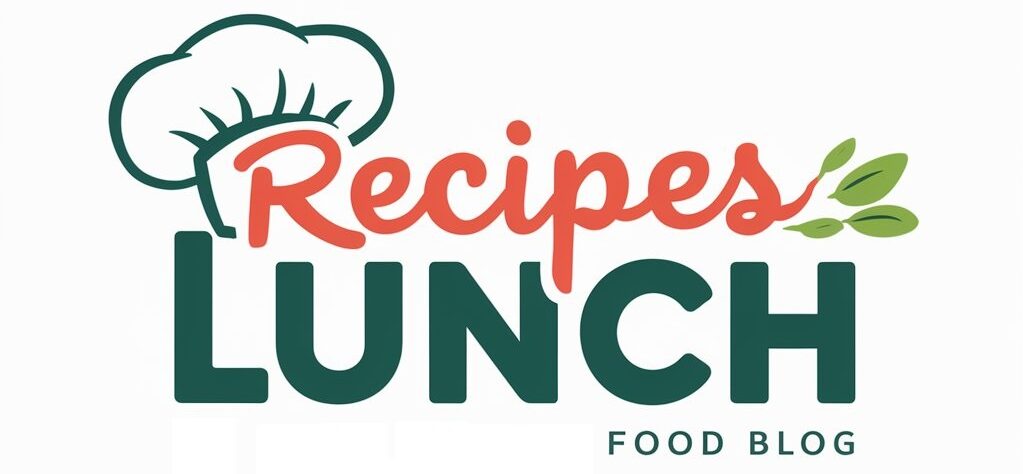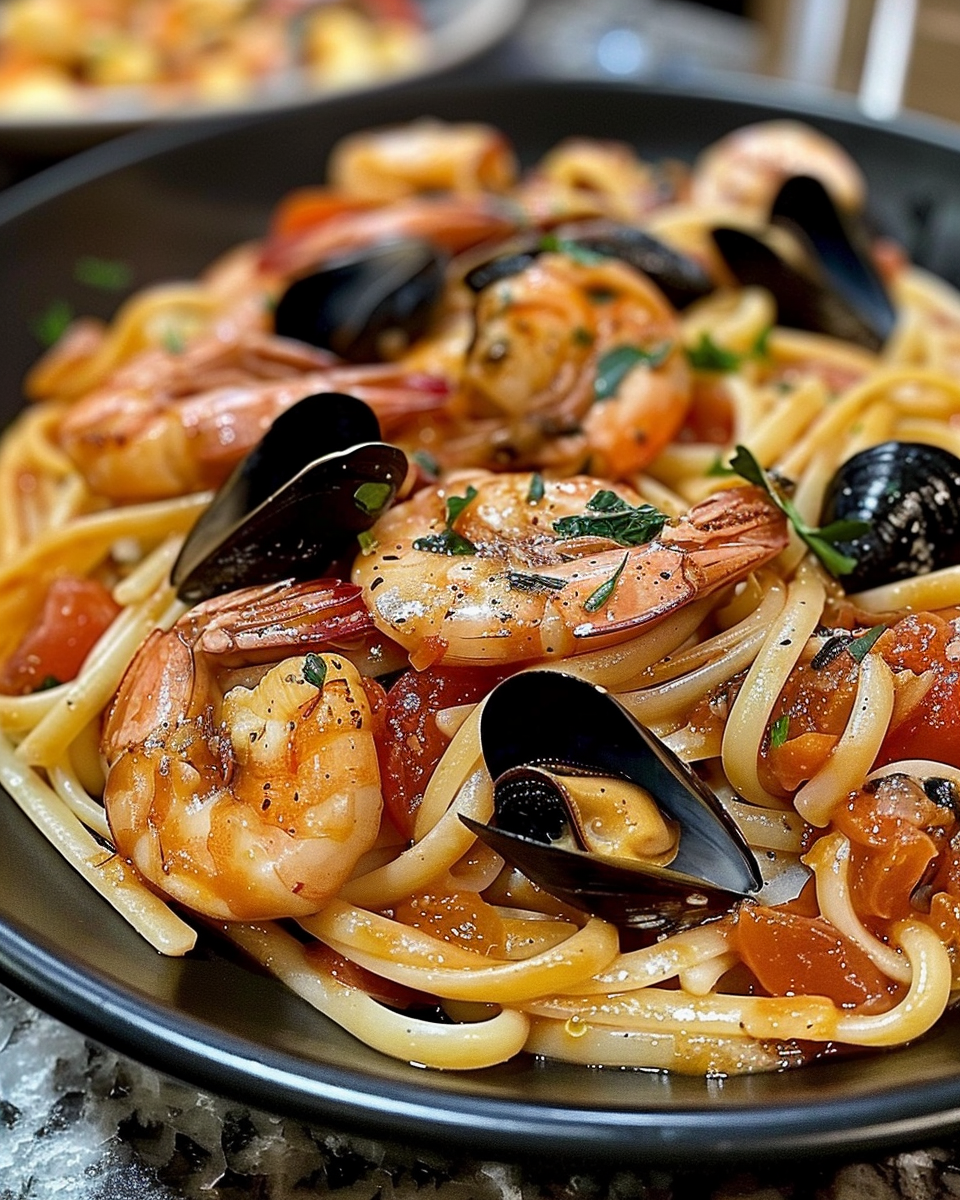Introduction
Hook:
Few things are as universally beloved as a well-prepared seafood pasta. Combining fresh shrimp, mussels, and linguine with a rich, flavorful sauce brings out the best of the sea. The mixture of tender seafood and al dente pasta creates a truly comforting dish. Whether you’re planning a casual dinner or an elegant gathering, seafood pasta is a versatile dish that never fails to impress.
Brief History of Seafood Pasta:
Seafood pasta finds its roots in coastal Italian cuisine, particularly from regions such as Sicily, Liguria, and Naples. In these areas, seafood is not just a part of the diet but a way of life. Fishermen would return with fresh catches, and cooks would craft simple yet delicious meals from what was available—often pairing seafood with pasta, a staple of Italian kitchens. The Mediterranean’s influence on these regions played a significant role in creating seafood pasta dishes we know and love today.
In places like the Amalfi Coast, pasta dishes with shellfish, such as shrimp, mussels, clams, and squid, have been a long-standing tradition. Seafood pasta reflects the Italian philosophy of letting the quality of ingredients shine through without too many complex additions.
Why Linguine, Shrimp, and Mussels?
Linguine is the ideal pasta for seafood dishes because its flat, narrow shape clings to the delicate sauces often used in these recipes. It’s robust enough to complement rich seafood without overpowering it. The pairing of shrimp and mussels adds a wonderful contrast in both texture and flavor—shrimp offering a tender bite, while mussels provide a briny, slightly chewy element that makes the dish exciting with every bite.
Shrimp and mussels also carry subtle flavors from the sea, which blend beautifully with garlic, white wine, and fresh herbs. Their natural sweetness, enhanced by a light sauce, makes this combination a favorite for seafood lovers everywhere.
Why It’s Popular Today:
Seafood pasta with shrimp and mussels has become a staple in homes and restaurants worldwide due to its accessibility and appeal. Fresh seafood, like shrimp and mussels, is now widely available, and frozen varieties make this dish achievable even in landlocked areas. This dish offers the luxury of indulgent flavors without being overly heavy, providing a perfect balance between carbs, protein, and healthy fats from olive oil and seafood.
It’s also versatile—you can serve it as a simple weeknight dinner or as a sophisticated meal at a dinner party. It pairs well with a variety of sides and beverages, making it adaptable to personal tastes and occasions.
Ingredients
Overview:
The beauty of seafood pasta lies in its simplicity. High-quality ingredients create the best version of this dish. Here’s what you’ll need:
For the Pasta:
Linguine:
- Linguine, a long, flat pasta, works well with seafood sauces because its surface area allows it to hold onto the sauce better than round pastas like spaghetti. Its slight width gives it enough body to complement the robust flavors of the seafood without getting lost.
- Alternatives: If you don’t have linguine, you can substitute it with fettuccine or spaghetti. For gluten-free options, look for a gluten-free pasta that mimics the texture of traditional linguine.
For the Seafood:
Shrimp:
- Shrimp is a star in this dish. Opt for medium-sized shrimp for the best bite. Fresh or frozen shrimp can be used, but it’s essential to peel and devein them before cooking to ensure a clean, sweet flavor.
- Cooking Tip: Avoid overcooking shrimp; they only need a few minutes to turn pink and opaque. Overcooked shrimp become tough and lose their delicate flavor.
Mussels:
- Mussels are another key ingredient, adding a briny, slightly chewy texture to the dish. Black mussels or blue mussels work well. Always ensure the mussels are fresh—discard any that are cracked, broken, or refuse to close when tapped.
- Preparation: Clean mussels by scrubbing the shells and removing the beard (the stringy fibers attached to the shell). It’s important to keep them in cold water before cooking to prevent spoilage.
For the Sauce:
Olive Oil:
- Extra virgin olive oil provides the base for the sauce, adding richness and depth to the dish without overpowering the delicate seafood.
Garlic and Shallots:
- Garlic and shallots bring aromatic sweetness and depth to the dish. Garlic, in particular, is the cornerstone of any seafood pasta, infusing the oil with flavor that enhances the shrimp and mussels.
White Wine:
- White wine plays a crucial role in deglazing the pan and building the sauce. It adds acidity, balancing the richness of the olive oil and seafood. Dry white wines like Sauvignon Blanc or Pinot Grigio are ideal, as their acidity enhances the dish without overpowering the other flavors.
Crushed Red Pepper:
- This ingredient is optional but adds a mild heat that complements the seafood without overwhelming the dish.
Fresh Herbs:
- Fresh parsley, basil, or oregano add a burst of freshness to the dish. Parsley is particularly common, giving the dish a clean, herbaceous finish.
Optional Ingredients:
Tomatoes:
- Adding cherry tomatoes gives the dish a subtle sweetness and color, brightening the sauce and complementing the seafood.
Lemon Juice or Zest:
- Lemon brings brightness and acidity, cutting through the richness of the sauce and enhancing the seafood’s natural flavor.
Parmesan Cheese:
- While traditionally, seafood dishes in Italian cuisine avoid cheese, Parmesan is an optional topping for those who enjoy it. Its nutty, salty flavor can provide a pleasant contrast to the seafood’s brininess.
Instructions (Step-by-Step)
Step 1: Preparing the Seafood
- Start by cleaning and prepping the shrimp—peel and devein them to remove any grit. Rinse them under cold water and set aside.
- For the mussels, scrub the shells under running water to remove any dirt. Remove the beard (the fibrous material) from each mussel, and discard any mussels that are cracked or open and don’t close when tapped.
Step 2: Cooking the Pasta
- Boil a large pot of salted water. Add the linguine and cook until al dente, usually about 8–10 minutes. Reserve some pasta water (about 1/2 cup) for adjusting the sauce later. Drain the linguine and set it aside.
Step 3: Making the Sauce
- In a large pan, heat olive oil over medium heat. Add minced garlic and shallots, sautéing until fragrant (about 2–3 minutes). If desired, add a pinch of crushed red pepper for a slight heat kick.
- Deglaze the pan by adding white wine, scraping up any browned bits from the bottom. Allow the wine to reduce by half, which takes about 5 minutes.
- Add the mussels to the pan and cover. Cook for about 5 minutes, or until the mussels open up. Discard any mussels that remain closed.
- Add the shrimp and cook for another 2–3 minutes until they turn pink and opaque.
Step 4: Combining the Pasta and Sauce
- Add the cooked linguine to the pan with the seafood and sauce. Toss everything together, ensuring the pasta is evenly coated. If the sauce seems too thick, add a bit of the reserved pasta water to reach the desired consistency.
- Season with salt, pepper, and fresh herbs like parsley or basil to taste.
Step 5: Final Touches
- For added brightness, stir in lemon zest or juice before serving. Toss in cherry tomatoes for a pop of color and sweetness. If you prefer, sprinkle with Parmesan cheese as a finishing touch.
- Garnish with fresh parsley and a drizzle of olive oil.
Serving Suggestions
Presentation:
Serve the seafood pasta in wide, shallow bowls for an elegant presentation. Garnish each plate with freshly chopped parsley or basil, adding vibrant color and a hint of freshness.
Side Dishes:
Crusty Bread:
- Serve alongside a warm, crusty garlic bread or a rustic Italian loaf to soak up the sauce. The bread enhances the dining experience by ensuring none of the flavorful sauce goes to waste.
Salad:
- Pair the dish with a simple green salad dressed with a light lemon vinaigrette. The acidity and crisp texture of the salad will balance the richness of the seafood pasta.
Grilled Vegetables:
- Grilled asparagus or zucchini makes a healthy and vibrant side dish. The smoky flavor of the grilled vegetables complements the seafood without overpowering it.
Beverage Pairings:
Wine Pairing:
- A crisp white wine, like Pinot Grigio or a light Chardonnay, works best with seafood pasta. These wines’ bright acidity and clean finish enhance the dish without overwhelming the delicate seafood flavors.
Beer Pairing:
- For beer lovers, a pale ale or a light lager balances the flavors of the dish and provides a refreshing contrast to the richness of the sauce.
Non-Alcoholic Options:
- Serve with sparkling water with a twist of lemon or iced herbal tea for a refreshing, non-alcoholic alternative.
Conclusion
Recap the Recipe:
Seafood pasta with linguine, shrimp, and mussels brings together the best of land and sea. The perfectly cooked linguine, tender shrimp, fresh mussels, and white wine garlic sauce form a beautifully balanced dish.
Highlight the Flavor Balance:
This dish embodies the harmony of the briny seafood with the rich, garlicky sauce and al dente pasta. The optional additions of lemon, tomatoes, or Parmesan give it flexibility for personal preferences.
Encourage Experimentation:
Feel free to experiment with other seafood options like clams, scallops, or calamari to diversify the dish. You can also try different herbs, spices, and sauces to customize the flavor profile to your liking.
Final Thoughts:
Whether you’re preparing a casual family dinner or hosting a more formal gathering, seafood pasta is sure to be a hit. Its combination of flavors, textures, and simple elegance make it an excellent choice for any occasion.
FAQs
- What kind of wine should I use for seafood pasta?
- Use a dry white wine like Sauvignon Blanc or Pinot Grigio to complement the briny seafood flavors without overpowering the dish.
- Can I use frozen shrimp and mussels?
- Yes, frozen shrimp and mussels can be used if fresh ones aren’t available. Thaw and drain them properly before cooking to avoid excess moisture.
- What other seafood can I add to this dish?
- You can add other seafood like clams, scallops, or calamari to create a more diverse seafood pasta.
- How do I store leftovers?
- Store leftovers in an airtight container in the fridge for up to 2 days. Reheat gently on the stovetop or microwave, adding a splash of water or wine to loosen the sauce if needed.
- Can I make this dish gluten-free?
- Yes, simply use gluten-free pasta in place of linguine. Ensure the other ingredients (e.g., wine and broth) are also gluten-free.
- Why do some people avoid Parmesan with seafood?
- In traditional Italian cuisine, cheese and seafood are rarely paired to preserve the delicate flavors of the seafood. However, adding Parmesan is entirely up to personal taste.
- What’s the best way to clean mussels?
- Rinse mussels under cold water, scrub the shells, and remove the “beard.” Discard any open or broken mussels before cooking.

